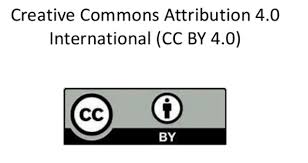Effect of Different Spacing Practices on Yield and Yield Attributes of Spring Rice in Dhanusha, Nepal
DOI:
https://doi.org/10.47440/JAFE.2023.4201Keywords:
Effective Tillers, Panicle Length, Spacing, Spring Rice, Thousand Grain WeightAbstract
An experimental study was conducted to determine the effect of spacing on the yield and yield-attributing parameters of a pipeline genotype of spring rice, IR 10L 152, in a farmer’s field in Lalgadh, Dhanusa. Five spacings, viz., 15cm×15cm, 20cm×15cm, 25cm×15cm, 20cm×20 cm, and 25cm×20cm, were replicated four times each in a randomized complete block design (RCBD). Results showed that different spacing performed significantly better on yield-related characters (plant height, number of tillers, panicle length, number of effective and non-effective tillers, number of filled and unfilled grain, and grain yield). The highest plant height at 90DAT (104.74cm), panicle length (23.68cm), number of effective tillers per hill (18.69), number of total grains per panicle (141.25), and number of filled grains per panicle (125.25) were found with 25cm×20cm spacing. Despite all the attributes being superior to other treatments (spacing), yield (t/ha) was found to be low (4.13 t/ha) for 25cm×20cm spacing when compared to 20cm×20cm spacing, with the highest yield of 4.88 t/ha among all treatments. The total number of plants per plot was low for 25cm×20cm due to greater spacing, which significantly reduced the net yield per plot. Incontrast, the lowest plant height at 90 DAT (97.56cm), panicle length (19.10cm), number of effective tillers per hill (14.04), number of grains per panicle (123.0), and number of filled grains per panicle (107.25) were found with 15cm×15cm spacing. The study revealed that 20cm×20cm spacing was found to be ideal for obtaining the maximum grain yield of the spring rice genotype in Dhanusa district.






 Publisher:
Publisher: 